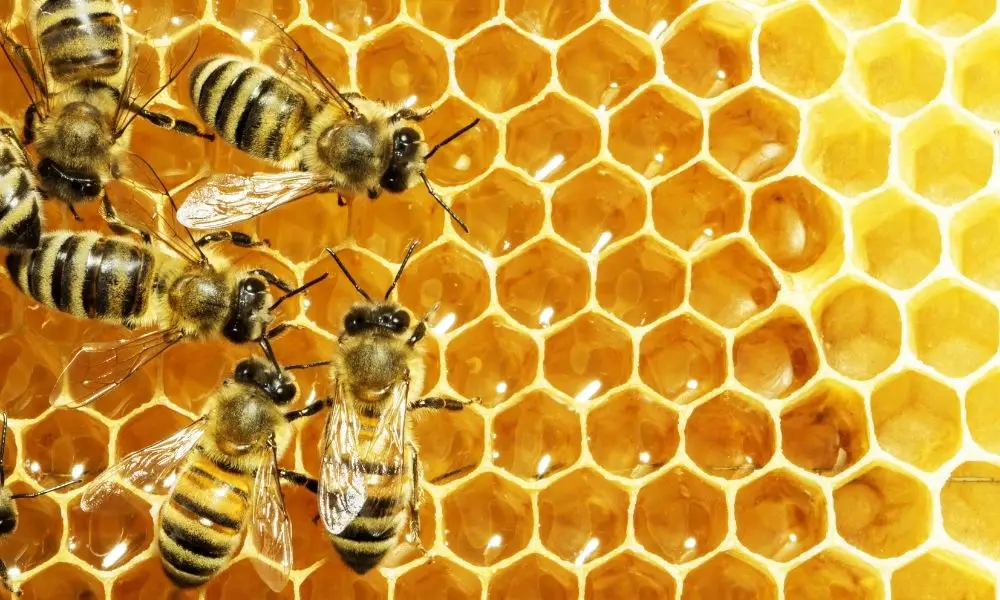

From royal jelly to beeswax, there are things aside from honey that honeybees can make. By reading this article, you will gain a special appreciation for their versatile abilities and products. You will also learn a little bit about how humans have leveraged these amazing substances.
A white paste-like fluid secreted by worker bees from their head glands, royal jelly is fed to the colony’s larvae. It is made up of water, simple sugars, crude protein, fatty acids, minerals, vitamin C, and enzymes.
Nurse bees can make this material when they are somewhere between five and fifteen days old. Although all larvae are fed royal jelly at first, once the bees choose one of the larvae as the next queen, she exclusively is fed large amounts of the substance. From this protein combination, she will hatch as the queen bee.
Humans use royal jelly to help treat Alzheimer’s and Parkinson’s disease. It can also heal wounds and lower cholesterol.
Beeswax is a wax naturally produced by honeybees after they secrete royal jelly. Glands in their abdomens secrete the wax. They then use the beeswax to create honeycombs, which are the hexagonal structures that honeybees use to store their eggs and honey.
Humans have many uses for beeswax. In Europe’s early history, it was used as a currency, for embalming bodies, for food preservation, and for strengthening sewing threads. Today, we still use it to produce candles, cosmetics, polishes, and pharmaceutical products.
Among the things aside from honey that honeybees can make, propolis is perhaps one of the least known. Bees make it by gathering resins from trees, flowers, and other artificial sources. Propolis, a hard and brittle material that melts when heated, is used by bees for sealing cracks and blocking bacteria and fungi from the hive. Propolis protects the hive from extreme weather.
Because of the benefits of propolis, humans use it for healing wounds resulting from ulcers, burns, or inflammation, as well as a natural antibiotic and immune system booster..
FAQ
Beeswax is a wax naturally produced by honeybees after they secrete royal jelly. Glands in their abdomens secrete the wax. They then use the beeswax to create honeycombs, which are the hexagonal structures that honeybees use to store their eggs and honey.
Additional Resources:
SanMelix Labs Honey Solutions for Wound Care
Potassium
Magnesium
Wolf Spiders
Turmeric
There’s nothing worse than lighting a new candle and watching it sputter out, tunnel, or…
Discover how woven metal fabric transforms restaurant design with its versatility, from feature walls to…
Upgrading your workspace? Get inspired by design ideas for materials, lighting, and amenities, and tips…
In recent years, the global interest in peptides has surged due to their wide-ranging benefits…
Maximize your workspace without overspending. Explore practical ways to expand your office using smart layouts,…
Discover how to create a thriving STEM community through hands-on, collaborative projects that are perfect…